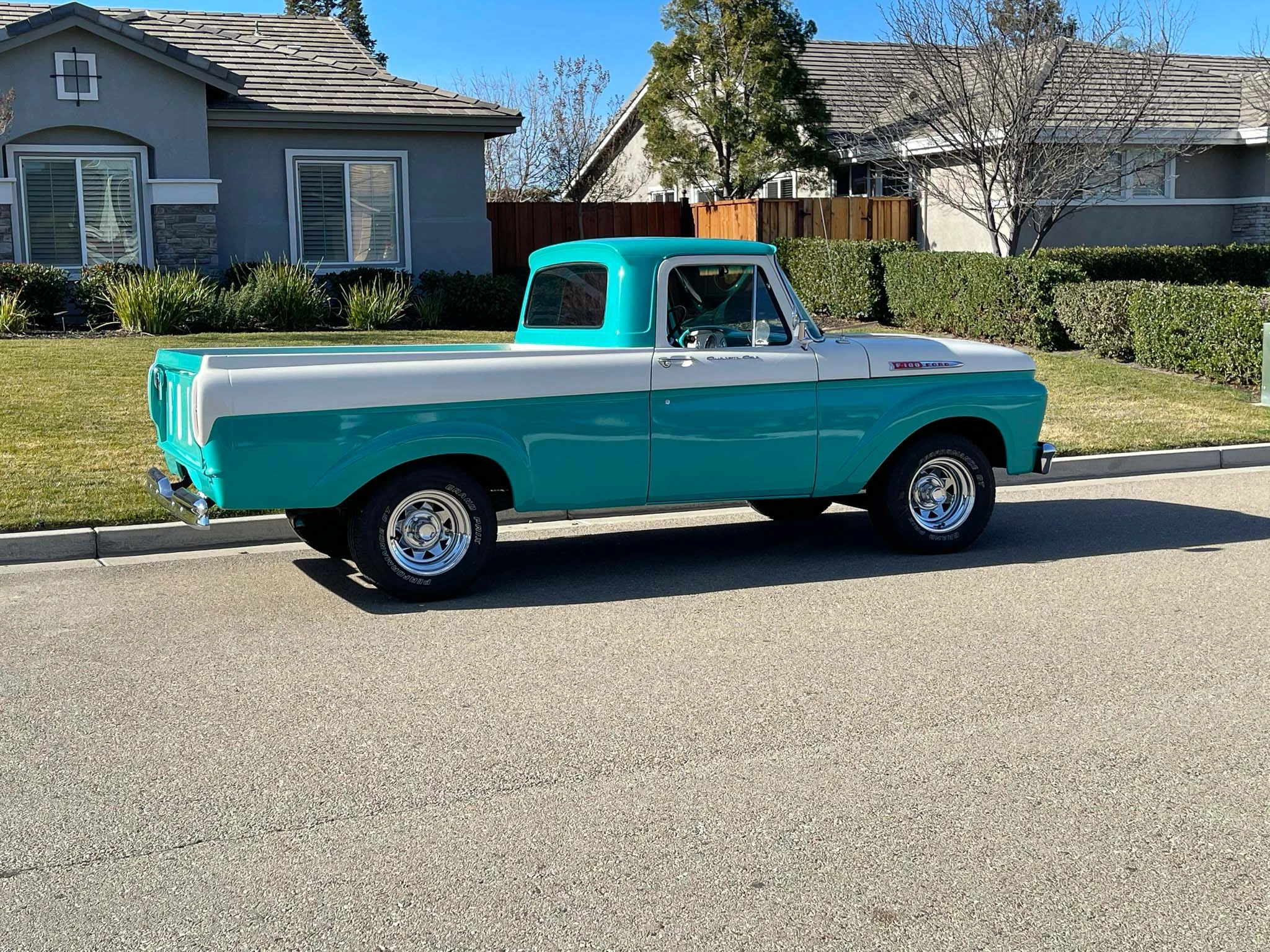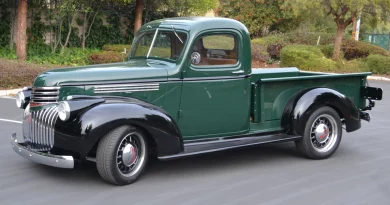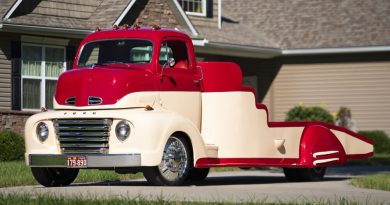1961 Ford F-100
The fourth generation of the Ford F-Series is a line of pickup trucks and commercial trucks that were produced by Ford from the 1961 to 1966 model years. Lower and wider than the previous generation, the fourth-generation F-Series marked several design changes to the F-Series, distinguished by bed sides matching the hood line and window sill in height. The model line returned to two headlights, a change that remained in place for over 50 years.
Originally intended as the successor for the Styleside, Ford developed an all-new configuration, developing a body constructed in line with the car-based Ford Ranchero. Dubbed the “integrated pickup”, Ford welded the cab and body together before their placement on the frame (removing the cab-bed gap).
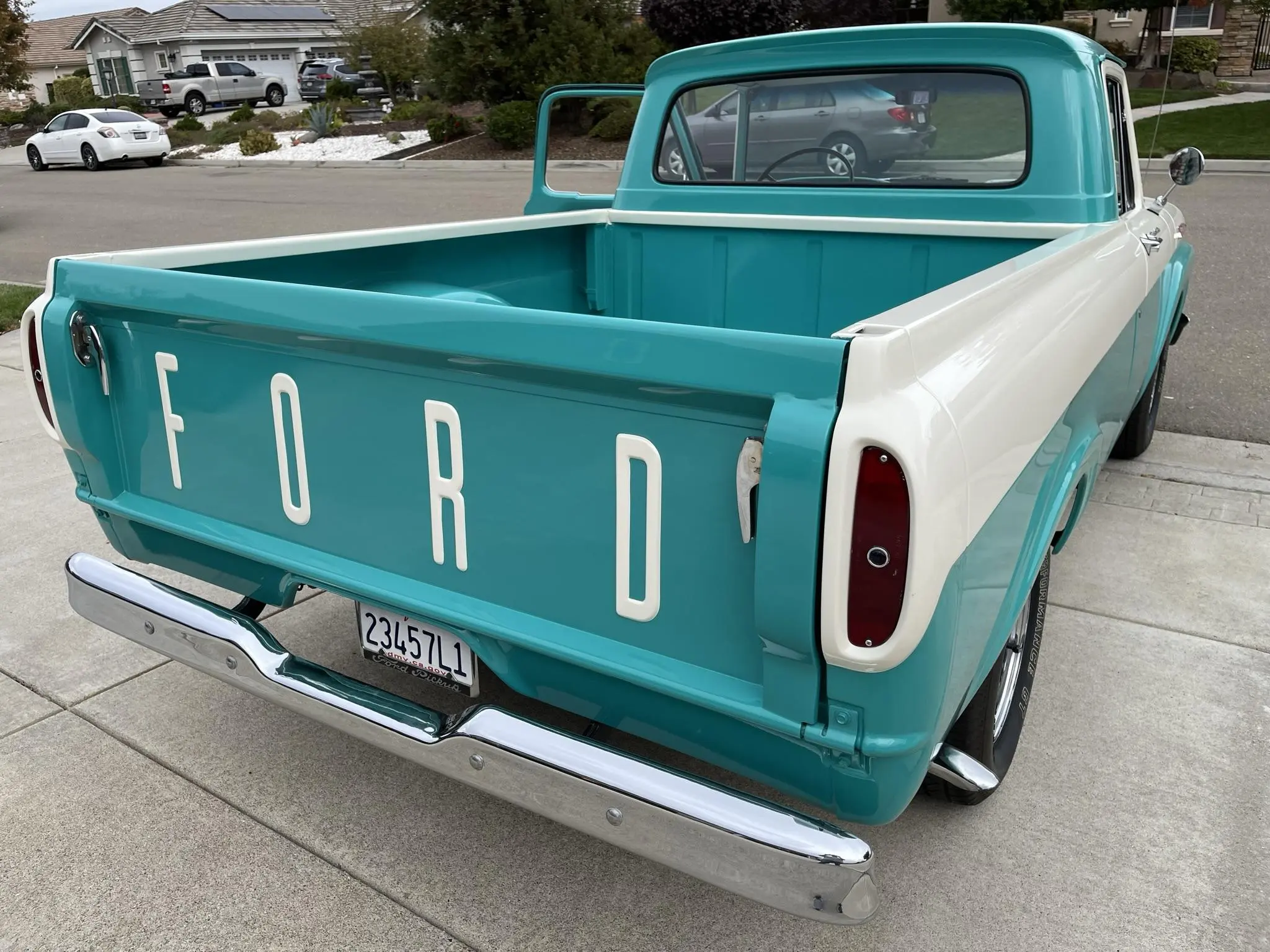
Along with the traditional separate Flareside beds, Ford introduced unibody trucks. These were originally named as the “integrated pickup” and consisted of the cab and the bed into one continuous piece, with no gap between them. The design required fewer stampings, such as the back of the cab served as the leading edge of the bed, less complicated assembly, such as the single-wall bed sides were spot-welded directly to the door sills, and the body had a less complicated path through the assembly plant’s paint shop. This achieved cost savings in the manufacture of the truck, but the one-piece cab and bed body was still mounted to a traditional ladder frame chassis. Only two-wheel-drive F-100 and F-250 models used this one-piece construction–four-wheel-drive models and all F-350s, as well as all models with Flareside beds, continued to use separate cabs and beds.

This 1961 Ford F-100 is a “Unibody” pickup, and was subsequently refurbished with an engine rebuild, a repaint in two-tone turquoise and white, and a refresh of the cabin. The truck is powered by a 223ci inline-six paired with a three-speed manual transmission with overdrive.
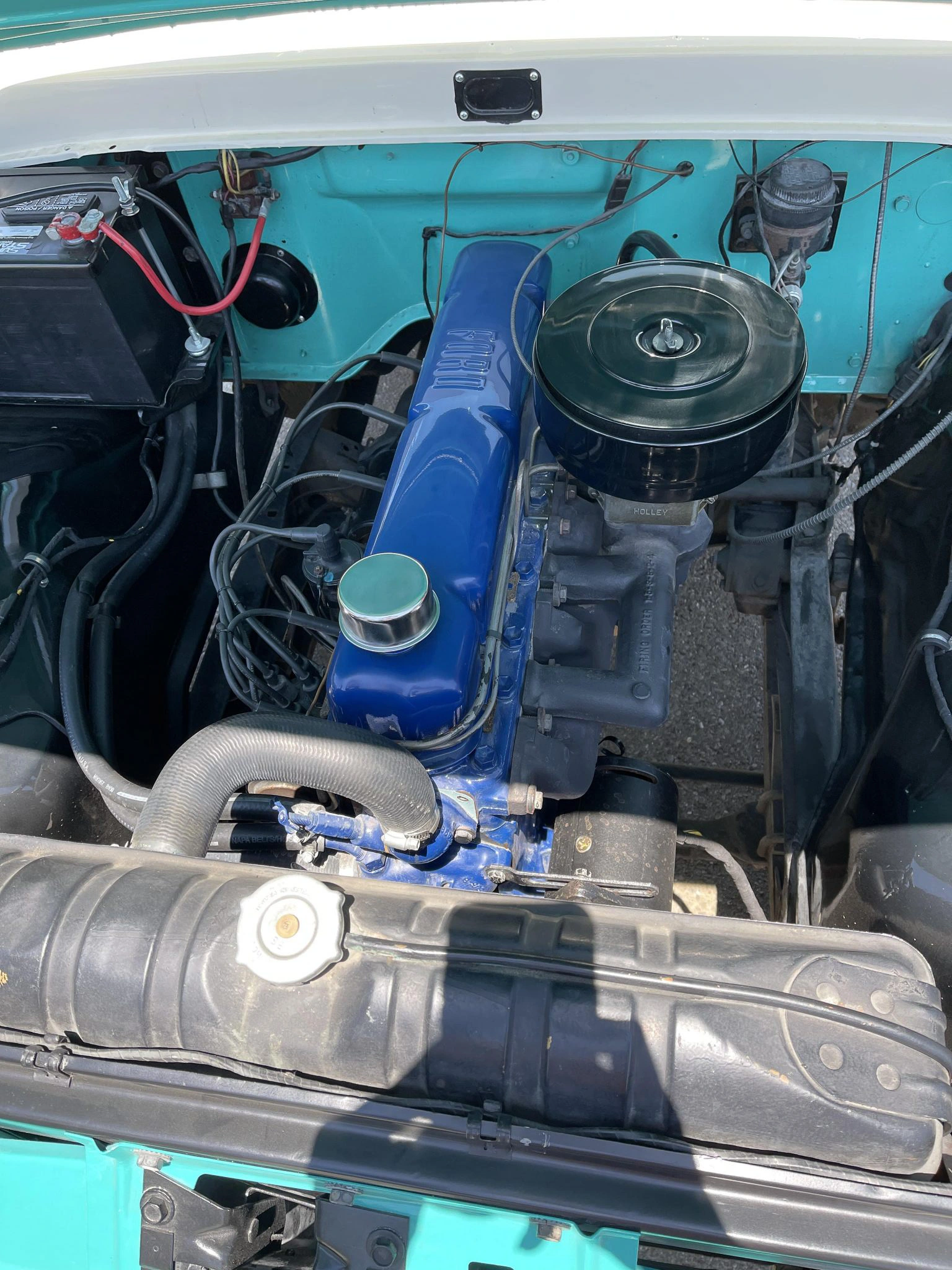
Chrome-finished 15″ wheels wear Performance GT Grand Prix tires. The truck is equipped with drum brakes at all four wheels.
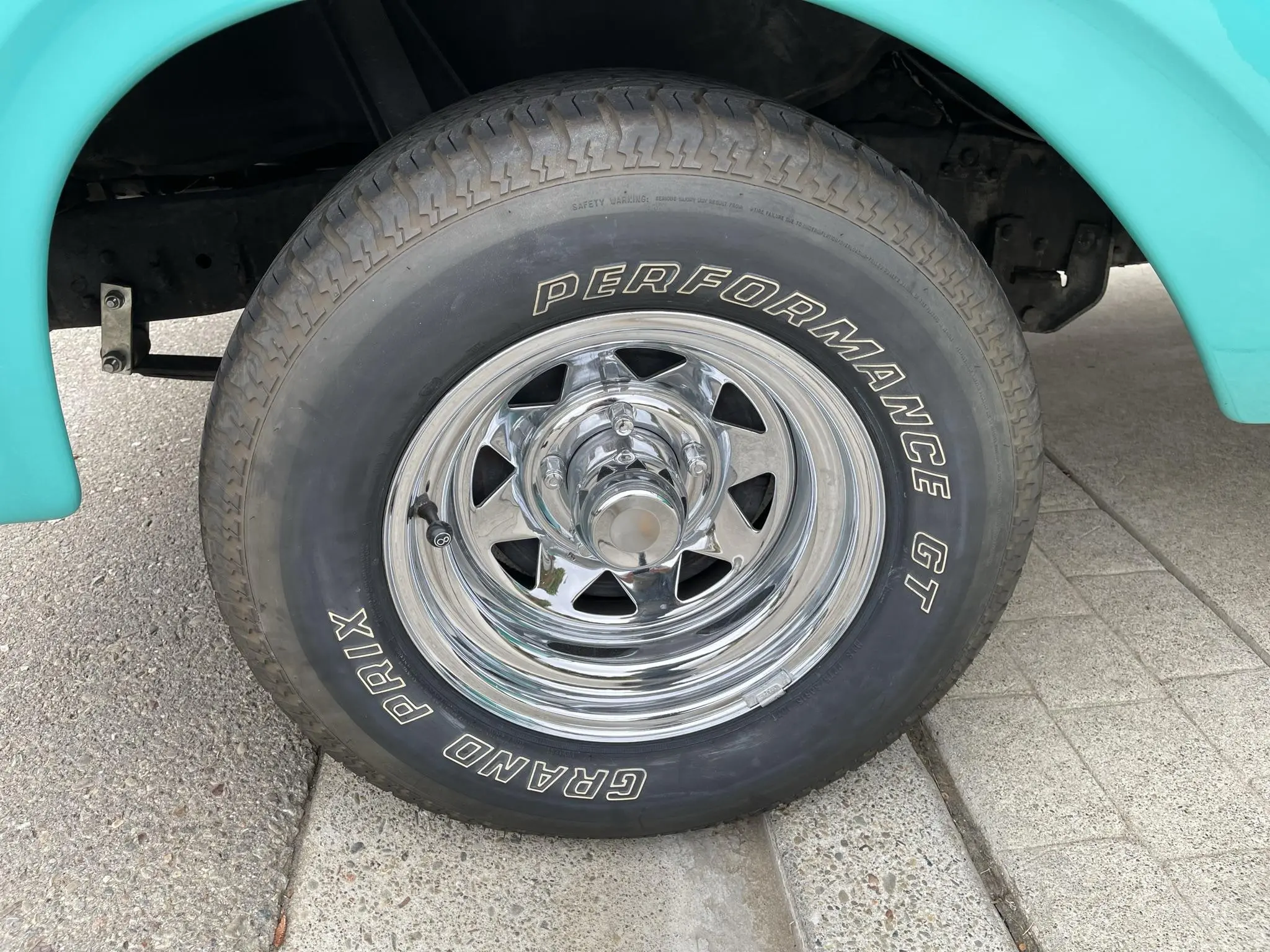
The cab features a bench seat with textured gray upholstery, vinyl floor covering, and two-tone metal surfaces painted to match the exterior. A three-spoke steering wheel with a chrome horn ring frames a 100-mph speedometer with inset gauges for fuel level and coolant temperature, while an aftermarket oil pressure readout is mounted beneath the dash.

Do you know why pickup beds are separate from the cabs? It’s because beds can be isolated from the cab. Stresses are confined to the bed and not transferred to the cab. Combining the two causes twisting and distortion. In extreme conditions, stressed bodies can become “work hardened.” That’s when metal is bent back-and-forth to the extent it cracks.
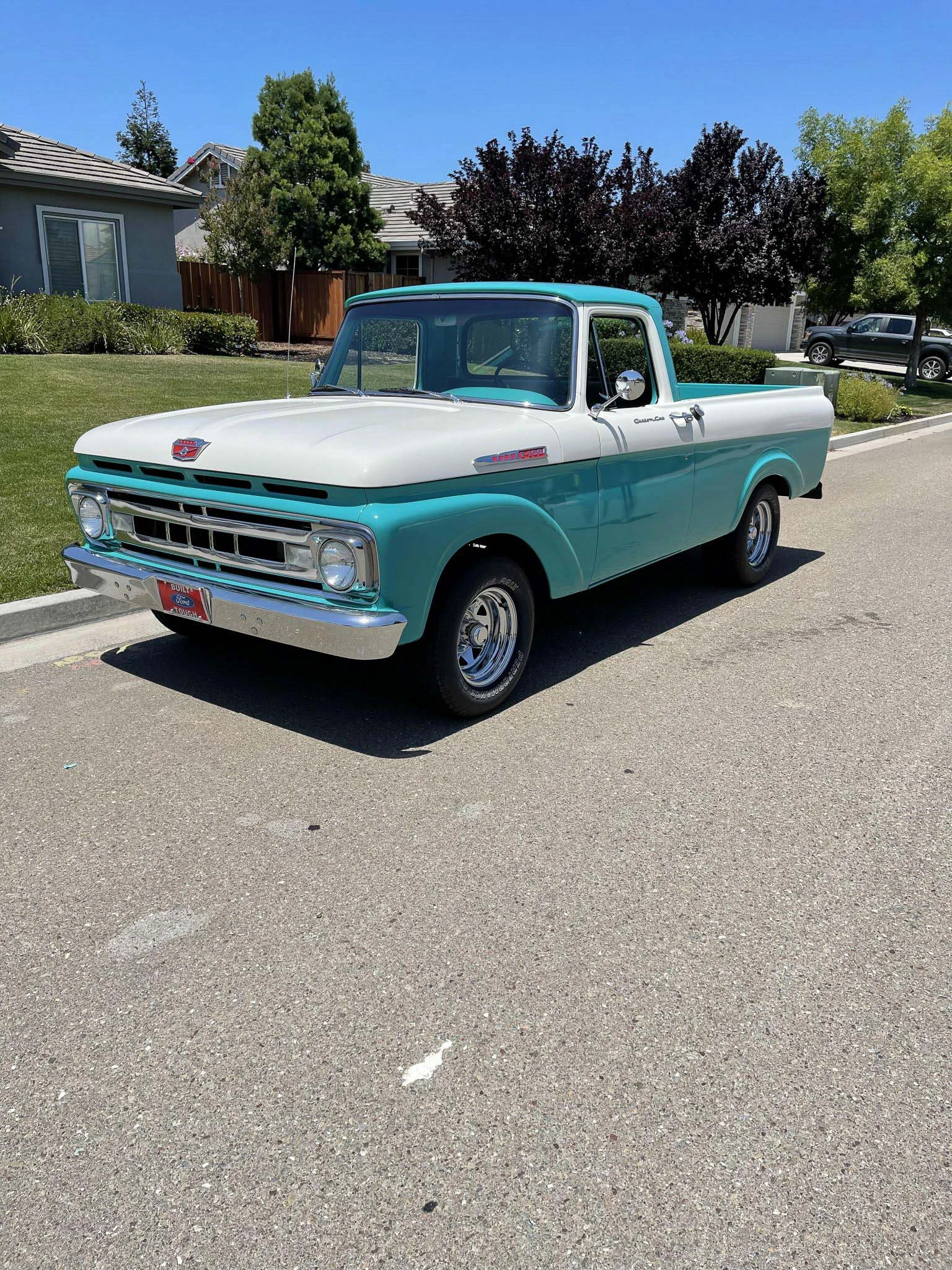 When the Styleside was introduced in 1961 everything was super cool. Marketed as the “integrated truck” the back of the cab was also the front of the bed. The bedsides were welded to the door sills. It was cheaper to make because there were fewer stampings involved. It was cleaner looking because there was no gap, and it allowed for more load space without the bed and cab separation.
When the Styleside was introduced in 1961 everything was super cool. Marketed as the “integrated truck” the back of the cab was also the front of the bed. The bedsides were welded to the door sills. It was cheaper to make because there were fewer stampings involved. It was cleaner looking because there was no gap, and it allowed for more load space without the bed and cab separation.
